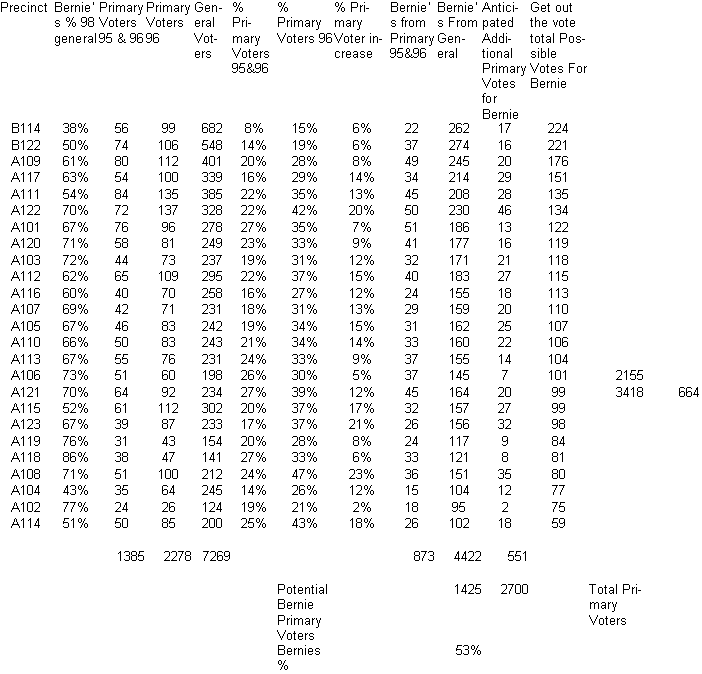Discovery of Key Publics
The chart below was used to determine which precincts were most important to the campaign. As you will see, we did not follow the typical formula of targeting our strongest areas first. Rather, the campaign decided to generate an outreach effort to precincts where we had the best possibility of getting voters to the polls. For instance, precinct B114, the Hands Pike neighborhood, had the greatest number of potential voters; yet, Hands Pike was a neighborhood where Bernie lost miserably in the 1998 general election (a partisan race with only two candidates), receiving only 38% of the vote in that election. In contrast, precinct A118, the Jacob Price Housing Project, was Bernie's strongest showing in the 1998 election, but it was not targeted because of the low number of potential voters. 16 precincts were determined to be critical to winning the election.

Based on prior primary elections, the campaign estimated 2,700 voters would turn out for the Covington mayoral primary. Early in the campaign a decision was made to target only those individuals who voted in at least one of the primary elections in 1996, 1998, or 1999. Our task was to make sure those people went to the polls May 23rd.
Some assumptions were made regarding voter turnout. For example, we expected a larger-than-usual number of republicans to vote because of a contested GOP congressional primary. Also, we anticipated more of the elderly to vote than that of the youth population. Residents of the Mainstrasse precinct were angry at the city commission for allowing an unrestricted Mardi Gras festival to be hosted in their neighborhood.
Identifying key publics was a combination of statistical work and plain, common sense. Yet, the larger task was discovering issues important to residents throughout the entire city.
Continue to Identifying Issues